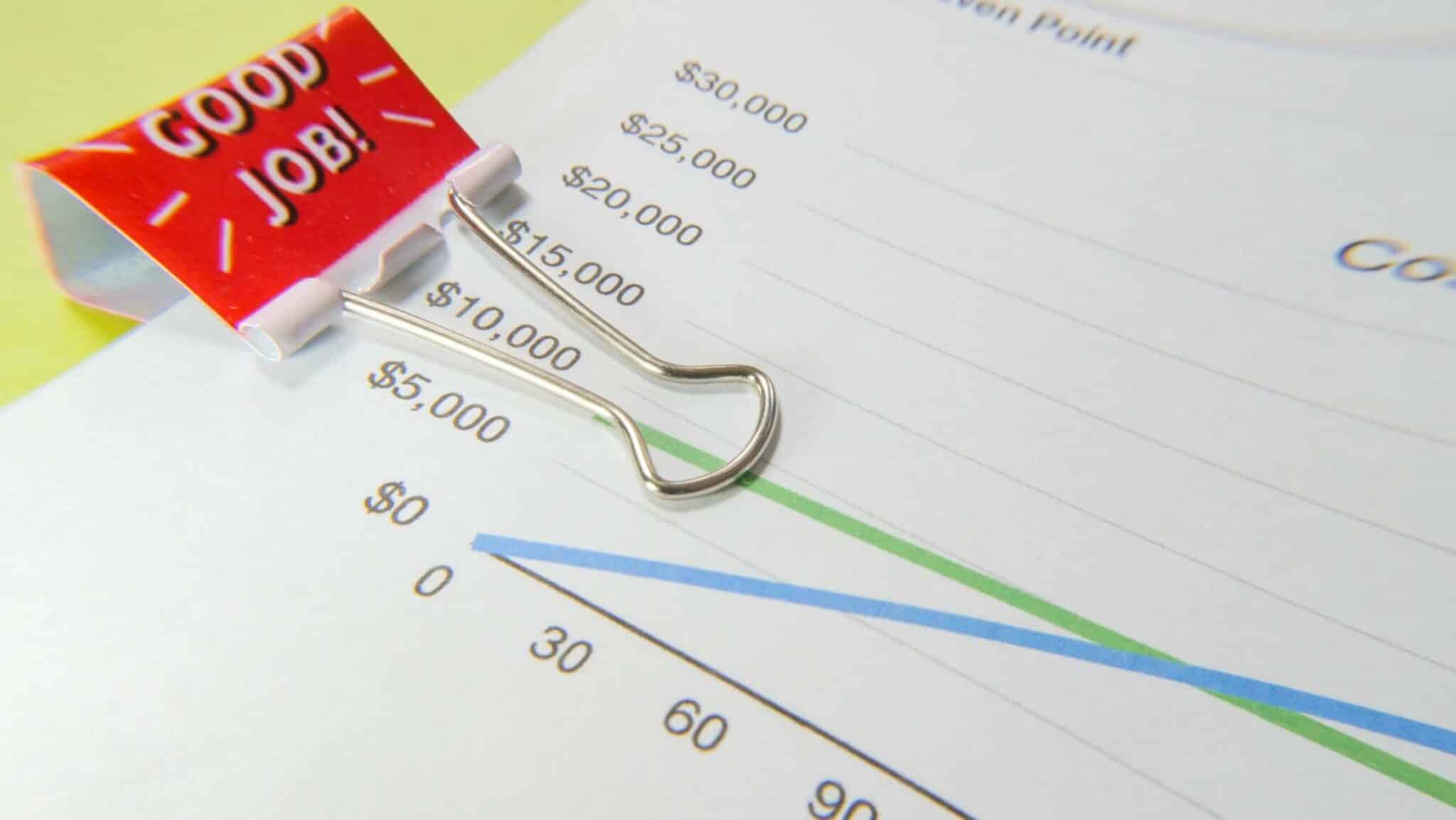What’s Rule of 40 in Accounting?

In the world of accounting and finance, there are various metrics and rules that help evaluate the financial health and growth potential of companies. One such metric, gaining prominence in recent years, is the “Rule of 40.” Initially popularized in the software-as-a-service (SaaS) industry, the Rule of 40 provides a valuable framework for assessing the balance between growth and profitability. In this blog post, we will delve into the essence of the Rule of 40, its calculation, and its significance, with a real-world example. What’s rule of 40 in accounting?
What is the Rule of 40?
The Rule of 40 is a financial benchmark that enables SaaS companies to strike a balance between revenue growth and profitability. It suggests that the sum of a company’s revenue growth rate and its profitability margin should equal or exceed 40%. This rule acknowledges that while rapid growth is essential for SaaS companies, it should not come at the expense of sustained profitability.
Rule of 40 Calculation and Interpretation
To calculate the Rule of 40, you add the annual revenue growth rate to the company’s profitability margin (expressed as a percentage). The resulting figure should ideally be equal to or greater than 40%. Here’s a simple example to illustrate its calculation:
Let’s consider a fictional SaaS company, TechCo, which generated $10 million in revenue in the previous fiscal year. In the current year, TechCo’s revenue increased to $15 million. At the same time, TechCo achieved a profitability margin of 20%. Applying the Rule of 40 formula:
Revenue Growth Rate: ((Current Year Revenue – Previous Year Revenue) / Previous Year Revenue) * 100
(($15 million – $10 million) / $10 million) * 100 = 50%
Profitability Margin: 20%
Rule of 40: Revenue Growth Rate + Profitability Margin = 50% + 20% = 70%
In this example, TechCo’s Rule of 40 value is 70%, indicating that the company is performing well above the benchmark. The higher the Rule of 40 value, the stronger the company’s overall financial position.
Interpreting the Rule of 40 value is crucial. If a company’s Rule of 40 value is below 40%, it suggests that the company may be sacrificing profitability to fuel growth, potentially raising concerns about long-term sustainability. Conversely, if the Rule of 40 value exceeds 40%, it indicates a healthy balance between growth and profitability.
Importance and Application of the Rule
The Rule of 40 in accounting is a key metric for SaaS companies. It provides valuable insights for both SaaS companies and their investors. Here’s why it is important:
Balancing Growth and Profitability: By adhering to the Rule of 40, companies can ensure a sustainable business model that supports both rapid growth and financial stability. It encourages a holistic approach to business strategy, preventing excessive focus on top-line growth without considering profitability.
Investor Confidence: Investors often consider the Rule of 40 when evaluating SaaS companies. A high Rule of 40 value indicates that the company is effectively managing its growth while maintaining profitability. This can instill confidence in investors, potentially attracting additional funding or investment.
Performance Comparison: The Rule of 40 serves as a useful benchmark for SaaS companies to assess their performance against industry peers. By comparing Rule of 40 values, companies can identify areas for improvement and make informed strategic decisions.
Accounting Rule of 40
The Rule of 40 is a vital metric for SaaS companies seeking a balance between growth and profitability. By measuring the combined value of revenue growth rate and profitability margin, companies can gauge their financial health and long-term sustainability. It helps prioritize sustainable growth strategies and enables comparisons against industry peers.
As the SaaS industry continues to evolve, the Rule of 40 remains a valuable tool for companies and investors alike. By understanding and applying this rule, businesses can make informed decisions, achieve financial stability, and thrive in a competitive landscape where growth and profitability go hand in hand.
Rule of 40 in accounting is an essential guideline. It states when revenue should be recognized and how to measure it. This guarantees correctness and uniformity in financial reporting.
Under Rule of 40, revenue is accepted when it is earned and paid or about to be received. Earned means that the seller has fulfilled its duties from the sale deal. Realized or realizable means that payment is expected or has been acquired. The amount of revenue to be recognized is based on the fair value of the goods or services provided.
Frequently Asked Questions

FAQs for ‘the Rule of 40?’
Q1: What is the Rule of 40 in accounting?
A1: The Rule of 40 is a financial benchmark used primarily in the software-as-a-service (SaaS) industry. It suggests that the sum of a company’s revenue growth rate and its profitability margin should be equal to or exceed 40%.
Q2: Why is the Rule of 40 important?
A2: The Rule of 40 helps SaaS companies strike a balance between growth and profitability, ensuring a sustainable business model. It provides insights into a company’s financial health, aids in investor confidence, and facilitates performance comparisons within the industry.
Q3: How is the Rule of 40 calculated?
A3: To calculate the Rule of 40, add the company’s annual revenue growth rate to its profitability margin, both expressed as percentages. The resulting figure should be equal to or greater than 40%.
Q4: What is considered a good Rule of 40 value?
A4: A Rule of 40 value above 40% is generally considered favorable. The higher the value, the better the company’s ability to balance growth and profitability.
Q5: What does it mean if a company’s Rule of 40 value is below 40%?
A5: If a company’s Rule of 40 value is below 40%, it suggests that the company may be sacrificing profitability to fuel growth. This could raise concerns about long-term sustainability.
Q6: Can the Rule of 40 be applied to industries other than SaaS?
A6: While the Rule of 40 was initially popularized in the SaaS industry, its concept of balancing growth and profitability can be relevant to other industries as well. However, the specific benchmark of 40% may not universally apply and may vary based on industry dynamics.
Q7: How can companies improve their Rule of 40 value?
A7: To improve their Rule of 40 value, companies can focus on increasing revenue growth while maintaining or improving profitability. This can be achieved through strategies such as optimizing pricing, reducing costs, improving operational efficiency, and expanding the customer base.
Q8: Can the Rule of 40 be used for early-stage startups?
A8: While the Rule of 40 is commonly applied to mature SaaS companies, early-stage startups may not meet the benchmark due to higher growth-focused investments. However, as companies evolve, they should strive to move towards the Rule of 40 principle for sustainable growth.
Q9: Are there any limitations to the Rule of 40?
A9: The Rule of 40 is a useful guideline but should not be considered as the sole indicator of a company’s financial health. It is essential to analyze other financial metrics, industry-specific factors, and individual company circumstances to gain a comprehensive understanding.
Q10: Can the Rule of 40 value fluctuate from year to year?
A10: Yes, a company’s Rule of 40 value can fluctuate from year to year as revenue growth rates and profitability margins may vary. It is important to analyze trends over multiple periods to assess the company’s performance effectively.
















Leave a Reply